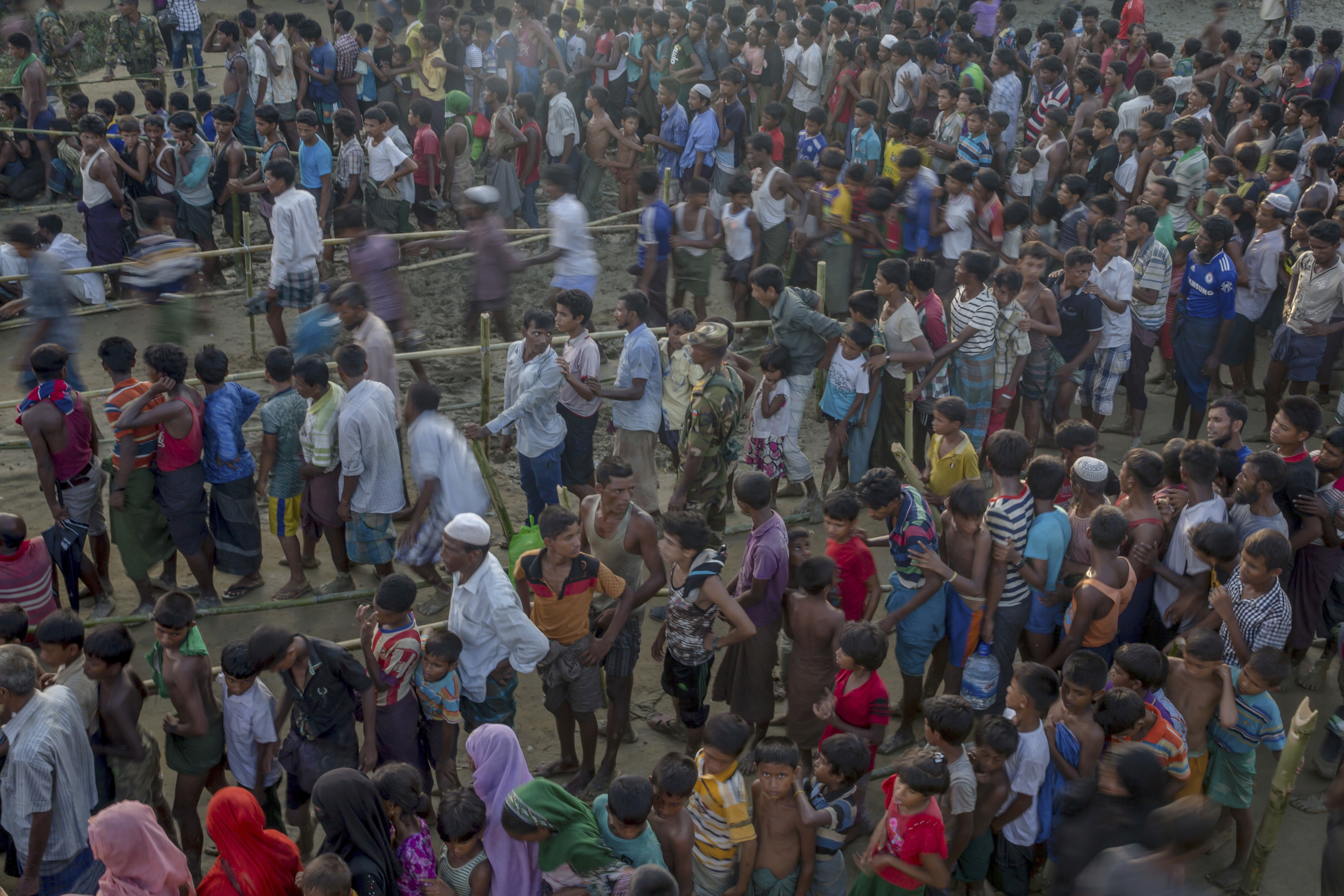
Masses of Rohingya Muslims crowd the border between Myanmar and Southeast Bagnladesh as they flee their homes in search of sanctuary.
The Rohingya people’s stories of rape, murder, destroyed villages and mass exodus form their new narrative as world leaders debate whether to call the situation “genocide.”
The United Nations Convention on the Prevention and Punishment of the Crime of Genocide said “acts committed with intent to destroy, in whole or in part, a national, ethnical, racial or religious group” constitutes genocide.
Determining whether to classify the acts carried out in Myanmar as “genocide” is not a simple process, as BYU history professor Mark Choate points out.
Choate specializes in Nazism and fascism and spent the last year studying the ongoing conflict in Darfur.
“The standards for genocide are fairly vague as far as scale and intent and effects,” Choate said. “It’s supposed to be this clarion call for action, but it’s degenerated to this sense of ambiguousness.”
Relations between the Rohingya minority and Buddhists in the Rakhine state of Myanmar have been tense since 2012, according to a BBC timeline.
September 2017 satellite images recorded by Human Rights Watch and the New York Times showed some 345 Rohingya villages have been burned.
The New York Times reported approximately 9,000 Rohingya have died, and Doctors Without Borders has treated numerous cases of rape. Additionally, National Geographic reported that 500,000 Rohingya have fled to Bangladesh since August.
Violence such as this is the result of labeling and separating a particular group, according to BYU history and Africana studies professor Leslie Hadfield. Hadfield said this is a key foundational stage of genocide.
“If you see someone as alien from you, you can justify brutal treatment,” Hadfield said.
In the case of Myanmar, separation comes through religious and ethnic differences.
About 87 percent of Myanmar’s citizens are Buddhist, according to census data. Only 1.2 million people in Myanmar are Muslim — not including the 1.1 million Rohingya who are considered “stateless” — compared to 45.1 million Buddhists.

BYU religion professor Gerrit Dirkmaat said categorizing people is often found at the foundation of crimes against humanity because it is such a natural human process.
“It’s a longtime human trait to desperately try to categorize people that are unlike ourselves, and once we categorize people it serves as the basis to justify actions that we would not normally consider just,” Dirkmaat said. “With religion, it is easy to group people because they have already labeled themselves as others and separate.”
According to CNN, one Buddhist extremist group known as the Ma Ba Tha produced an English language pamphlet describing the Muslim minority and other religions as threats to Buddhist teachings.
BYU history professor Brenden Rensink said propaganda — like the Ma Ba Tha pamphlet — plays a key role in cases of genocide and other such crimes against humanity.
“Propaganda is at the heart of what takes ordinary men from just that — ordinary, average neighborly men to murderers,” Rensink said. “You have to dehumanize a group and then you can go in and slaughter without conscious, but that dehumanizing is all in propaganda.”
Hadfield studied the 1994 Rwandan genocide and said the Hutu extremists used propaganda in the form of radio communication to promote the idea that the Tutsi were “cockroaches” and needed to be exterminated.
Propaganda also played a major role in the Holocaust with the mass murder of Jews, where Nazi media often referred to Jews as “rats,” according to Choate.
“Propaganda and the media convey the message that these targets aren’t like you … they’re just insects or diseases or vermin that have to be killed, like how people kill rats. It’s not how people kill other people, it’s how people kill rats, so it doesn’t seem like murder,” Choate said.
BYU student Brennan Steiner served an LDS mission in Myanmar and said based on what he has read and seen, he would label the situation as genocide.
Steiner said people in power have spent too much time debating whether the situation in Myanmar is genocide and said he hopes to see some action taken in the near future.
“I believe that the leaders of the world need to be held accountable for the stewardship they’ve been given,” Steiner said, “I’m not recommending the removal of a regime, but someone needs to be held accountable for the atrocities in Myanmar.”

In an attempt to address the atrocities in Myanmar, the U.S. State Department said it is considering “economic options available to target individuals associated with atrocities.”
Rensink said holding people accountable and intervening in cases like Myanmar is not simple but asked, “Are we okay with non-intervention? Are we okay with just letting these things go on?”
Despite the messy nature of genocide and other crimes against humanity, Rensink said decreasing the occurrence of these atrocities as a global community is possible.
Rensink, Choate and Hadfield all said continued conversation and study of genocide is key to combatting its occurrence.
Unrest in Myanmar continues today, but the acts of violence against the Rohingya people have not been labeled as genocide. The U.S. State Department said it is working with the United Nations, United Nations Human Rights Council and “other appropriate venues” to find a solution.
Recently Myanmar and Bangladesh reached an agreement to return and repatriate some of the refugees. According to The Associated Press, the Myanmar government said it will accept 1,500 Rohingya per week, aiming to return all the refugees within two years.
The Associated Press also reported that despite efforts in Myanmar to prepare for the repatriation process, Bangladesh and many refugees are hesitant to move forward with the program.




